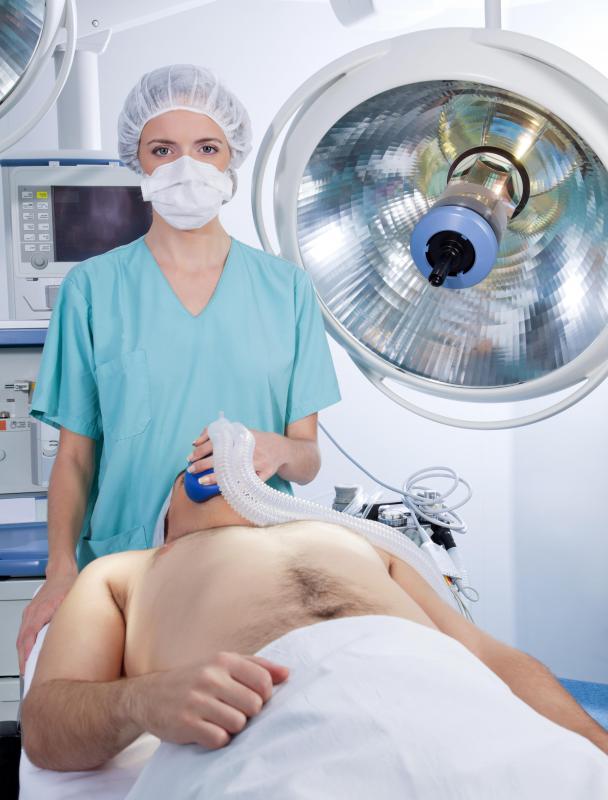At WiseGEEK, we're committed to delivering accurate, trustworthy information. Our expert-authored content is rigorously fact-checked and sourced from credible authorities. Discover how we uphold the highest standards in providing you with reliable knowledge.
What is a Gastrostomy Tube?
A gastrostomy tube is a feeding tube that is inserted through the abdomen or mouth into the stomach wall to feed patients who cannot eat normally. Gastrostomy tubes can be temporary or permanent, depending on what kind of condition the patient has and for how long they will be unable to eat normally. Feeding tubes are often used for babies born with birth defects that affect the mouth, esophagus, or stomach. Patients with other conditions that render them unable to swallow or chew properly are also candidates for a gastrostomy tube.
Babies usually require a gastrostomy tube insertion through the abdomen directly into the stomach. Other patients with certain conditions may require this type of placement as well. Surgeons use general anesthesia for the procedure so that the patient is asleep. The surgeon will then insert a hollow tube through the stomach via a small incision. The area is stitched up so that the tube is secure. There is a small button on the outside of the abdomen through which nourishment and medication are injected.

Other patients have gastrostomy tubes inserted through the mouth via an endoscopic procedure. The surgeon applies numbing medications to the mouth and throat and gives IV sleep medications to relax the patient and put him or her to sleep. A small instrument is inserted into the throat that enables the surgeon to see into the patient's stomach to insert the tube.

Some patients who have a gastrostomy tube may still be able to eat normally in addition to receiving nourishment through the feeding tube. This is especially helpful in young children with gastrostomy tubes to help them learn how to eat normally. If regular feedings are not done, patients often have difficulty adapting to eating normally if the tube is ever permanently removed.

Many patients experience nausea after tube placement. This usually subsides on its own after the stomach heals fully in five to seven days. Medication to relieve pain and nausea from the procedure can be administered through the tube. Serious side effects from gastrostomy tubes are rare, provided the tube is cared for properly.
Care of a gastrostomy tube involves flushing and venting the tube regularly. Doctors give their patients specific instructions on how to care for the tube at the time of placement. Gastrostomy tubes should be flushed with water before and after feedings and medications are given. Even if no feedings or medications are given for a long time, the tube should be flushed at least once every eight hours.

Venting the tube prevents excess air and fluid from building up in the stomach. Venting is usually done by attaching a drainage bag to the button on the abdomen. Sometimes venting is done with a syringe to pull out excess air and fluid if the patient experiences bloating or gagging.
AS FEATURED ON:
AS FEATURED ON:
















Discussion Comments
My mom has lung cancer. She did radiation treatment and now she has a stomach tube and it has green leakage out the opening and she has diarrhea. She can't swallow anything. What should I expect?
Post your comments